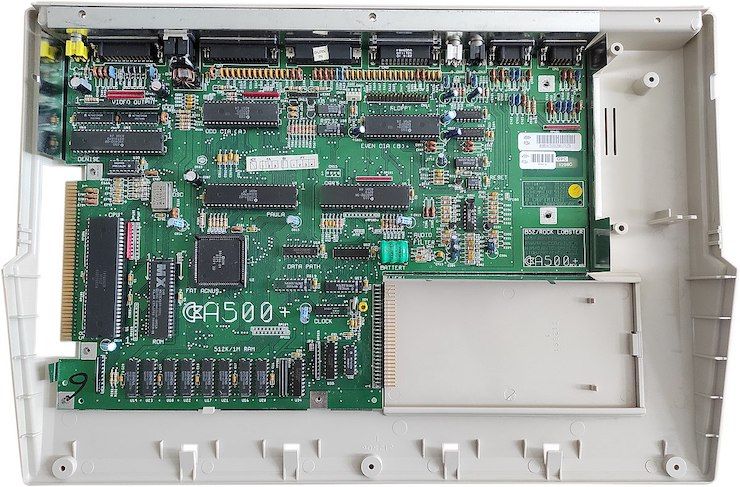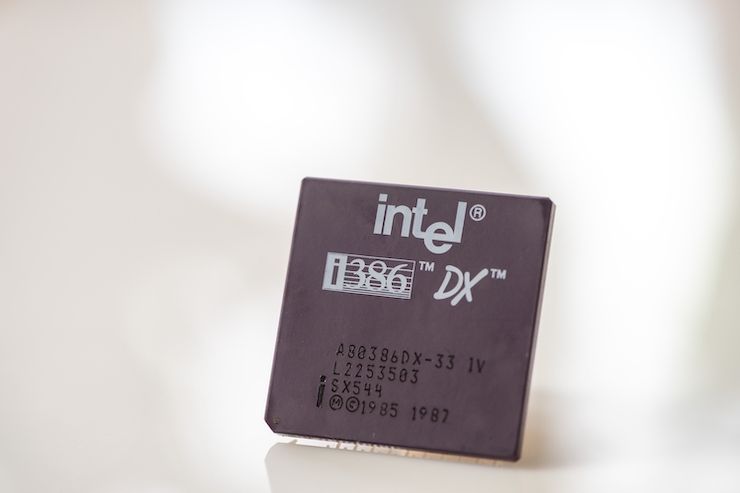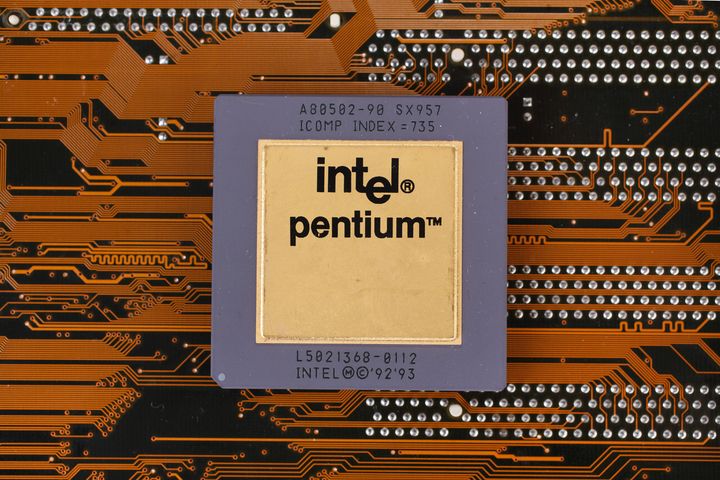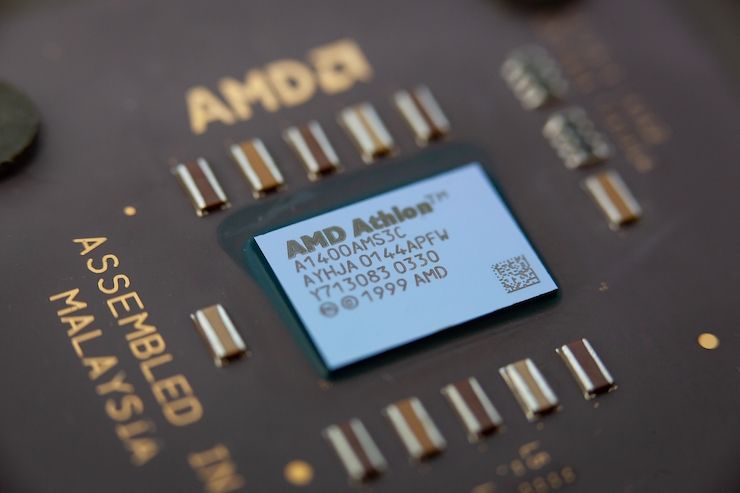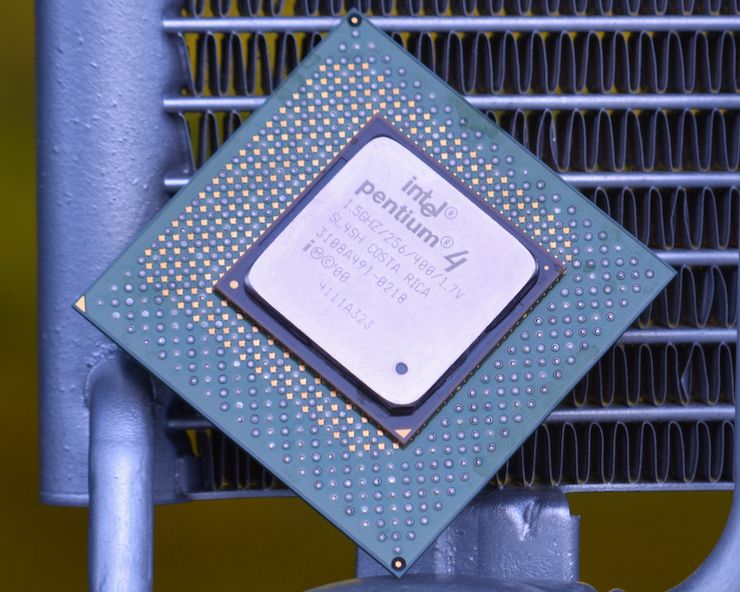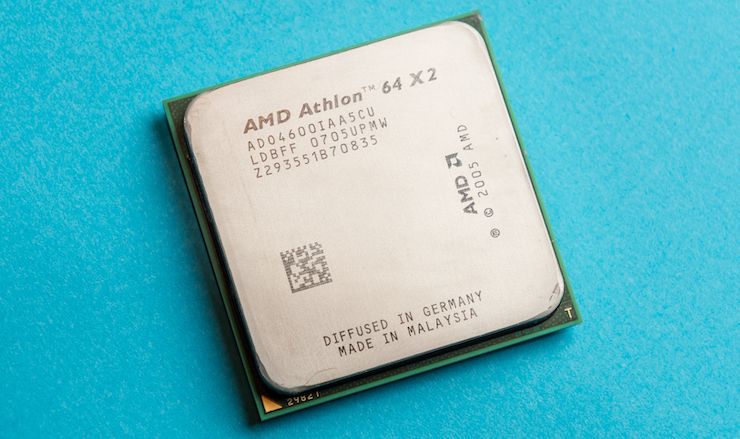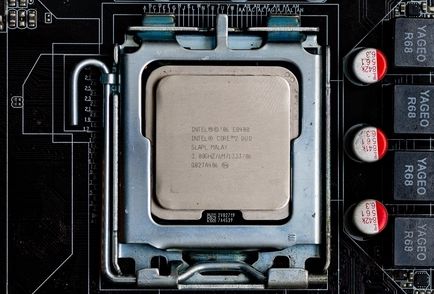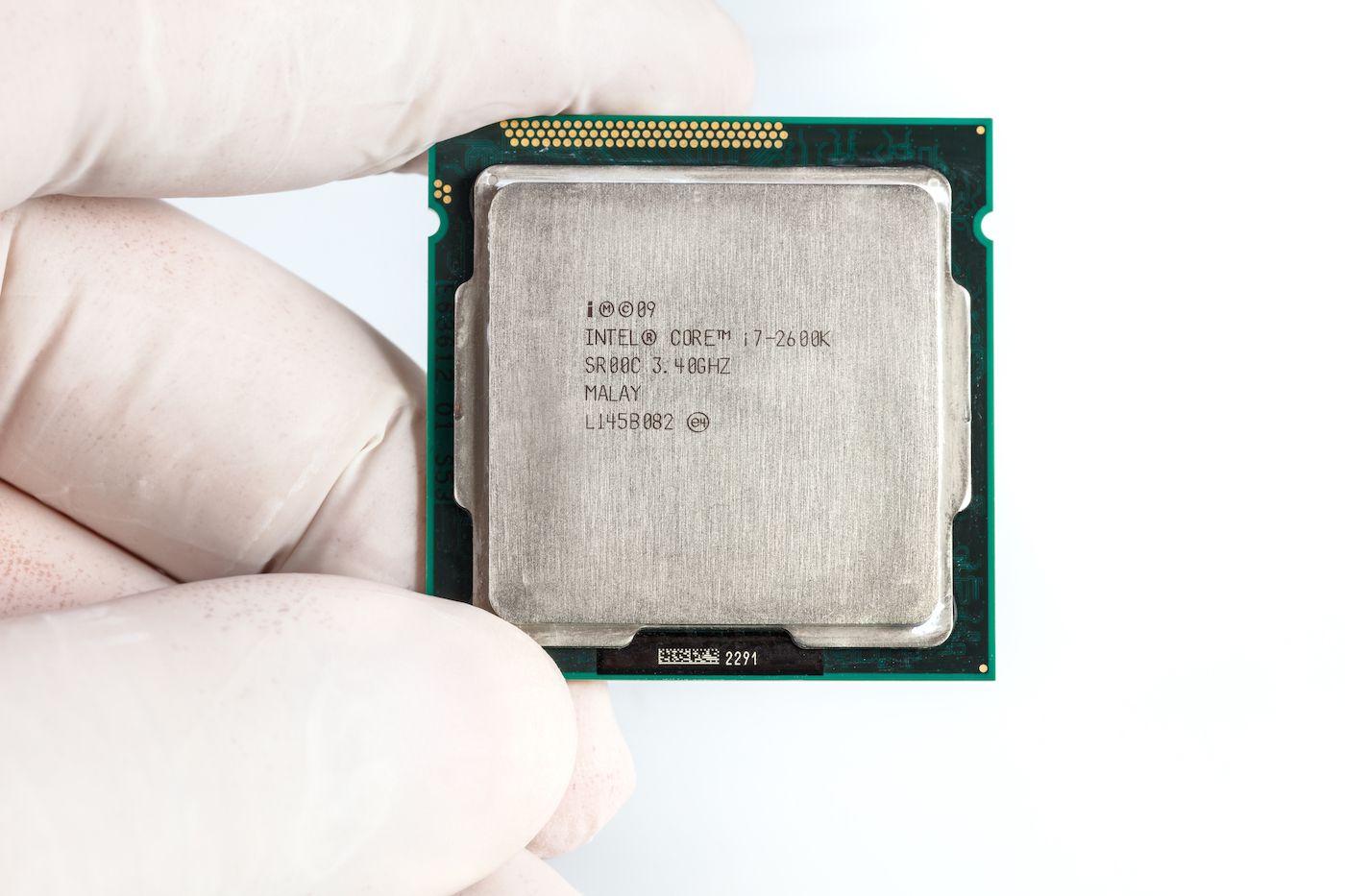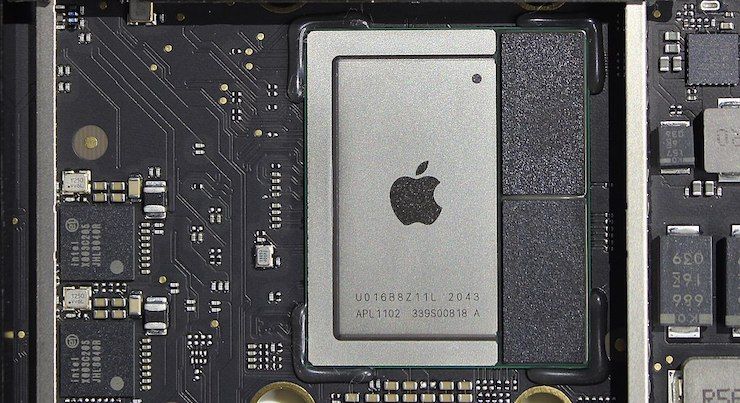Every era of computing has its standout stars. The brains behind our beloved machines, the Central Processing Units (CPUs), have shaped technological advancement. Here’s our list of the ten most influential CPUs that have left their mark on history to date.
1 Intel 8088 (1979)
An Intel 8088 CPU standing on-end.
This little piece of silicon magic was the heart of the first IBM Personal Computer. The 8088 was a modified version of the 8086, tailored to be more cost-effective. Even though it was a compromise solution, its architecture placed the Intel 8088 in a league of its own. The decision to base the IBM PC on the 8088 kickstarted the PC revolution and established Intel as a significant player in the burgeoning microprocessor industry.
If you’re an (IBM-compatible) PC user today, the CPU inside your system can trace its lineage back to this chip. So it’s not a stretch to call it the most influential CPU, or at the very least a very small and exclusive club member.
2 Motorola 68000 (1979)
An Amiga 500 With Motorola 68000 CPU
Competing with Intel in the late ’70s, Motorola’s 68000 CPU was notable for its use in two iconic machines: the Apple Macintosh and the Commodore Amiga. With a more sophisticated 32-bit architecture, it offered a level of performance ahead of its time.
The 68000 was in an absolute heap of different computers, which meant there were plenty of coders who were great at programming for it. If things had gone a little differently, the 68000 might have been the CPU design to dominate instead of Intel’s x86 technology.
3 Intel 386 (1985)
The Intel i386 DX CPU
The Intel 386, officially known as the i386, was a major milestone in the CPU landscape. It was the first 32-bit x86 processor, and it introduced a new era of multitasking with its hardware-level support for protected mode. This move away from the 16-bit limit was a game-changer, paving the way for more powerful software applications, like the Windows operating system.
This was when IBM-compatible PCs really started to feel like something special, especially (for me at least) when it came to video games. I especially remember that our 286 computer just couldn’t handle Wolf3D, but the 386 at my dad’s job blasted through this revolutionary first-person shooter game like it was nothing.
4 Intel Pentium (1993)
An Intel Pentium CPU
It’s all about the Pentiums baby!
With the arrival of the Pentium, Intel redefined performance expectations. The Pentium was the first x86 chip to use a superscalar architecture, which allowed it to execute more than one instruction per clock cycle. This CPU drove the multimedia revolution of the ’90s, making real-time video playback and complex 3D graphics a reality for home computers.
With later Pentiums including the MMX feature set, it made the idea of playing video and audio on a computer seem less of a silly idea, and more like something you’d want to do. This was the real multimedia revolution.
5 AMD Athlon (1999)
An AMD Athlon CPU without an integrated heat spreader
AMD’s Athlon was the underdog that could. It was the first processor to break the 1GHz barrier, challenging Intel’s dominance and offering a credible alternative for PC enthusiasts. The Athlon series established AMD as a serious contender in the CPU market, leading to a more competitive, innovation-driven industry.
This was the first time that any CPU brand other than Intel seemed like a sensible choice. Athlon’s were cheaper and often just as fast or faster than the Intel CPUs they undercut. It was a good time to be a budget PC enthusiast!
6 Intel Pentium 4 (2000)
An Intel Pentium 4 CPU
In 2000, the Pentium 4 was released with a brand new NetBurst architecture, which took clock speeds to new heights. It represented a key period of evolution in CPU design, showcasing Intel’s pursuit of higher frequencies and driving competition.
While the Pentium 4 was a beast at the time, it’s on this list because it was almost anti-influential. This was the peak and the end of the Ghz wars. The single-minded pursuit of single-core clock speed and performance ran into a brick wall with this CPU, and the CPUs that followed started becoming more parallel by increasing their core count, and broader by doing more work per clock-cycle rather than simply pushing the clock speed higher.
7 AMD Athlon 64 (2003)
Athlon 64 X2 CPU
The Athlon 64 marked a significant point in CPU history by introducing 64-bit computing to the consumer market. This allowed processors to handle vastly larger amounts of data, unlocking new levels of performance. It also introduced the world to AMD64 architecture, which is still the standard in the majority of today’s PCs.
8 Intel Core 2 Duo (2006)
An Intel Core 2 Duo CPU in its socket with no heatsink.
After learning lessons from the heat and power issues of the Pentium 4, Intel bounced back with the Core 2 Duo. This chip’s multi-core technology brought a new level of multitasking efficiency to the table. The Core 2 Duo also brought back per-clock efficiency, marking the start of the “more cores” trend and the eventual end of the clock speed race.
I also have to make a strong honorable mention of the Intel Core 2 Quad Q6600, which came out in 2007. While the mid- to high-end mainstream was all about dual cores, the quad-core Q6600 was the CPU we were drooling over in magazines. Every week someone managed to clock a Q6600 higher, and who could imagine every needing more than four cores?!
9 Intel i7-2600K (2011)
The i7-2600K was a dream come true for PC enthusiasts. This quad-core CPU offered hyperthreading and had an unlocked multiplier, making it a favorite among overclockers. It showcased the maturity of the multi-core concept and cemented Intel’s position as a high-performance CPU manufacturer.
In fact, the entire Sandy Bridge family was something of a revelation. I almost put the i5 2500K in this position instead of the 2600K simply because, apart from hyperthreading, you could get virtually the same performance and overclocking success for a much lower price.
Sandy Bridge quad cores were such a potent line of CPUs, that even in 2023 many modern games still list them as a minimum requirement.
10 Apple M1 (2020)
Apple M1 SoC
Last but certainly not least, the Apple M1 chip made waves in the computing world by challenging the status quo of x86 dominance. This Arm-based processor brought unprecedented efficiency and performance levels to Apple’s line of Macs, marking the first time a tech giant swapped out third-party CPUs for in-house silicon on a large scale. The M1’s success has serious implications for the future, ushering in a new era of personalized, ultra-efficient computing.
Now, I know that the M1 isn’t strictly a CPU, but a system-on-a-chip that includes a CPU, but the total package on offer here in terms of CPU power, memory, storage, and GPU performance is still unbelievable years after this chip package launched.
The M1 is influential and will keep being influential, because it redrew the map of what computing power should be. Instead of aiming for performance at any cost, the M1 offers more performance than most people need, but in an extremely usable form, with the 18-hour battery life of an M1 Mac making a mockery of x86-based laptops with similar levels of performance.



